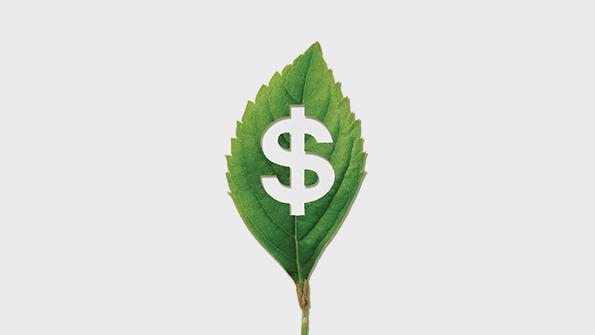
One metric that can be applied to illustrate the high cost of the impact of the COVID pandemic on the world’s airlines is their combined net losses over the three years from 2020 through 2022: almost $190 billion.
It’s a massive number. But it will likely pale in comparison with the ongoing and increasing costs associated with operating sustainably and meeting targets to be carbon net-zero by 2050.
As some airlines, most notably US carriers, eked out profits in 2022, and more are expected to recover in 2023 (see forecast, pg. 14), the extent of what it will take investment-wise to be a green industry is becoming clear and daunting. Not all of the solutions are known or are technologically feasible today, but a known known, as former US Defense Secretary Donald Rumsfeld might have put it, is that it will be very expensive.
Subscribe to the best-read publication for the global airline management community: Air Transport World magazine. Written by Air Transport World’s expert team of journalists, every article focuses on what airline management professionals need to run their airline.
Airlines, of course, will not be the only part of the air transport industry paying a premium for decarbonization. Airports and suppliers—not least aircraft and engine makers—are investing heavily in a greener future for the industry as a whole. But airlines are historically, and continue to be, the paupers in the commercial aviation industry value chain.
VALUE CHAIN IMBALANCE
An IATA-McKinsey study released in December underscores the situation. Key findings include that, despite delivering consistent operating profits in the pre-pandemic years of 2012-2019, the world’s airlines did not produce economic returns above the wider industry’s weighted average cost of capital (WACC). On average, their return on invested capital (ROIC) was 2.4% below the WACC, collectively destroying an average of $17.9 billion of capital each year.
Pre-pandemic, all industry sectors except airlines delivered an ROIC that exceeded their WACC, with airports providing investors an average of $4.6 billion annually above the WACC, or 3% of revenue. GDSs and travel tech companies averaged returns of 8.5% of revenues above the WACC. Air navigation service providers delivered a 4.4% return.
IATA describes this as proof of a long-standing imbalance in the aviation value chain.
“It clearly shows that airlines, on average, are not able to benefit financially to the same degree as their suppliers and infrastructure partners,” IATA director general Willie Walsh says.
Changing this dynamic will be a huge challenge. Even those airlines that went into the pandemic with relatively healthy balance sheets barely survived the COVID wrecking ball, and those that are edging back into profitability are doing so with miniscule margins. That’s at the same time as conventional jet fuel prices are stingingly high, sustainable aviation fuel (SAF)—where available—costs even more, labor costs are rising, and the true costs of sustainability are only just beginning to sink in.
Against this background, there are calls for airlines to adopt new business models. But that’s far easier said than done. Airlines are intensely competitive, fragmented, resistant to change and notoriously undisciplined at avoiding fare wars.
“It’s difficult to see how these entrenched forces will change significantly in the near term,” Walsh admits.
Arguably, the last big step-change in how to set up and run an airline was drawn on a cocktail napkin by Herb Kelleher and Rollin King as they looked from outside at how airlines were operated and thought it was nuts. Southwest Airlines, the result of that out-of-the-box thinking, became the template for LCCs worldwide and loaned more than a few tricks to the financial and operating toolboxes of legacy airlines.
Addressing what’s coming next—a crawl out of the pandemic hit combined with a fast-approaching sustainability juggernaut—will require even more ingenuity.
Among the solutions, inevitably, will be placing more of the costs of decarbonization onto the consumer. In other words, higher ticket prices. That will be hard to do as airlines vie for each and every customer in a recovering market. But merely inviting passengers to voluntarily offset their flight’s carbon footprint is no longer credible or sufficient. And the ridiculous practice by some ultra-LCCs of charging less than the cost of a carry-out dinner for a flight to some beach destination needs to stop.
But new airline business models won’t crack the challenge if they are countered by government policies. Across Europe, there’s a mess of incoming new taxes and mandates that will do little to encourage SAF production and availability. Worse, some individual European countries’ environmental measures, such as flight tax increases being imposed by the Dutch government, risk skewing the competitive balance of an international industry.
“The EU Commission approach … mandating an equal spread across European airports, is all stick and no carrot. What we need is a flexible mechanism that decouples SAF supply from the overall EU target, a book-and-claim system. This would empower airlines to play an active role in the SAF purchasing process and enable SAF production to increase fastest where it’s most efficient and thus drive the costs down,” IATA deputy director general Conrad Clifford notes.
In the US, by contrast, a clean energy transition is being incentivized via the Inflation Reduction Act. That gives tax credits and other financial incentives to grow SAF production.
It’s the kind of common-sense approach that the industry, and the world, needs to see a lot more of to ensure commercial flying is sustainable, environmentally and financially.






Comments